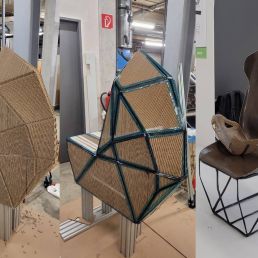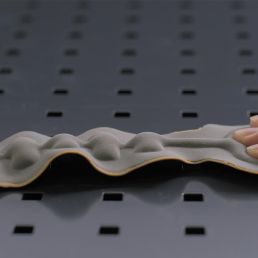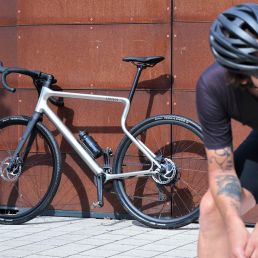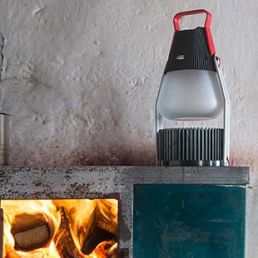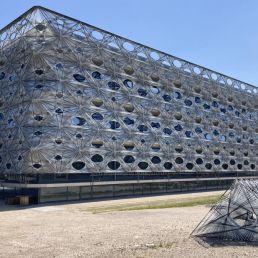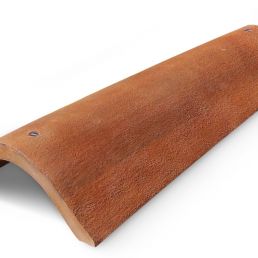
Plastic-free DipWrap
Bio-based protective film developed for vegetables and fruit
7 January 2022
Plastic packaging for fruits and vegetables has been banned in France since the beginning of the year. Around 30 types of fruits and vegetables will have to be packed without the use of the usual foil and blister solutions in the future. With the ban, the French government is taking on a pioneering role in the EU and wants to save more than a billion plastic packaging a year. Alternatives made of paper and cardboard are already available on the market. An exciting development to protect vegetables comes from Aalto University in Helsinki. Here, students have developed a bio-based protective film for cucumbers.
Agar-agar, carnauba wax and dispersed cellulose nanocrystals
The so-called “DipWrap” comes from Ena Naito, Louise Kallai, Emilia Ikävalko and Sari Kupiainen, who developed the technology in the “Design Meets Biomaterials” course as a completely new way of wrapping cucumbers. The cucumbers are immersed in a bio-based liquid solution, forming a transparent film that dries in a few seconds. The protective layer can be washed off as a whole.
The dip mix consists of the red algae-derived gelling agent agar-agar, a carnauba wax dispersion and dispersed cellulose nanocrystals (CNC). One of the challenges the team faced was not being able to find previous studies on similar solutions.

„We went to the lab every week and tested several materials. We came up with the idea of using agar, because we had used it for cooking. We added also wax to make more waterproof-film and CNC for its antibacterial properties“, says Louise Kallai, a Master student in Chemical Engineering who is spending a year in student exchange at Aalto University.
The team believes that the dipping treatment could also be used for other vegetables and fruits as well. „This is a baby step, but hopefully it’s a beginning of something that could be commercialised and could spark interest in this kind of packaging. It also encourages people to question our daily choices“, says Ena Naito, a master’s student in contemporary design.
The project was a part of CHEMARTS, a collaboration between The School of Chemical Engineering and The School of Arts, Design and Architecture, which aims to inspire students and researchers to create new concepts for bioeconomy by combining design, business thinking and natural materials science.
Instagram-chanel: www.instagram.com/dip.wrap
image: Biobased packaging protects the cucumbers from damage and keeps them fresh longer. (source: Aalto University)
image: Biobased liquid in which the cucumbers are dipped. (source: Aalto University)
Ecoblaq molecular wood colours
23 March 2024
Ecoblaq is a molecule manipulation method, a natural chemical reaction, making…
Natural fiber reinforced car seat
22 October 2023
The focus of the project "Design for Recycling" is a seat shell that is made…
MotorSkins morphing textiles
19 April 2022
Berlin based start-up MotorSkins designs and produces textiles with embedded…
3D Pioneers Challenge 2022
15 December 2021
The 3D Pioneers Challenge 2022 adresses tech pioneers who pave the way for…
IGNIS – Light from waste heat energy
12 August 2020
The availability of affordable, independent and, above all, clean electrical…
Brake disc with reduced fine dust
21 April 2021
Fine dust endangers our health. One of the main sources is traffic, especially…
Texoversum
15 July 2023
With the "Texoversum", Reutlingen University has put into operation a training…
Invisible Terracotta Solar Rooftile
10 May 2023
The family-run business Dyaqua has developed a technology to integrate a…
Xarvio – Digital Farming
8 January 2021
BASF Digital Farming GmbH has received the renowned Crop Science Award for the…

